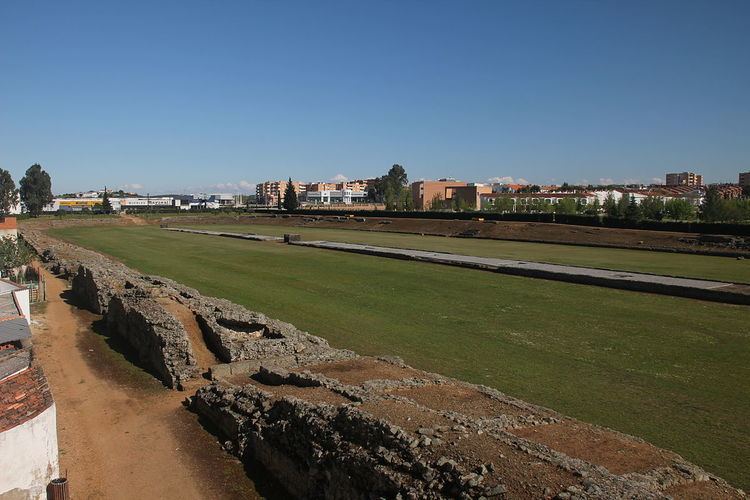Location Spain Criteria iii, iv UNESCO World Heritage Site inscription 1993 | Type Cultural Reference 664 Phone +34 924 00 49 08 | |
 | ||
UNESCO region Europe and North America Hours Open today · 9AM–6PMWednesday9AM–6PMThursday9AM–6PMFriday9AM–6PMSaturday9AM–6PMSunday9AM–6PMMonday9AM–6PMTuesday9AM–6PMSuggest an edit Similar Amphitheatre of Mérida, Roman Theatre, Acueducto de los Milagros, Alcazaba of Mérida, Puente Romano - Mérida | ||
Roman circus in m rida spain
The Roman circus of Mérida (Spanish: Circo romano) is a ruined Roman circus in Mérida, Spain. Used for chariot racing, it was modelled on the Circus Maximus in Rome and other circus buildings throughout the empire. Measuring more than 400 m in length and 30 m of width, it is one of the best preserved examples of the Roman circus. It could house up to 30,000 spectators.
Contents
History
There is no consensus about the circus' dating, as it was built and used for several years before its official dedication. It seems to have been built sometime around 20 BC and inaugurated some 30 years later. It was located far outside the city walls, but close to the road that connected the city to Toledo and Córdoba.
After the fall of the Western Roman Empire, and the rise of Christianity in Spain, the circus saw more use than the other Roman structures of Mérida, since racing was considered less sinful than spectacles performed in the theater and Amphitheater.
Modern status
Mérida's circus remains very well preserved. As is true with the Circus Maximus, most circuses's structures have been destroyed over time as the area occupied by them was great and often in very flat land near their respective cities. The Mérida circus however has kept numerous structures, including the Porta Pompae ("main entrance"), the Porta Triumphalis ("triumph gate"), the spina (the longitudinal wall), the tribunal iudicium ("tribune of the judges").
A museum dedicated to the circus now sits near the middle edge of the circus grounds and allows admittance into the fenced area around the circus remains.
